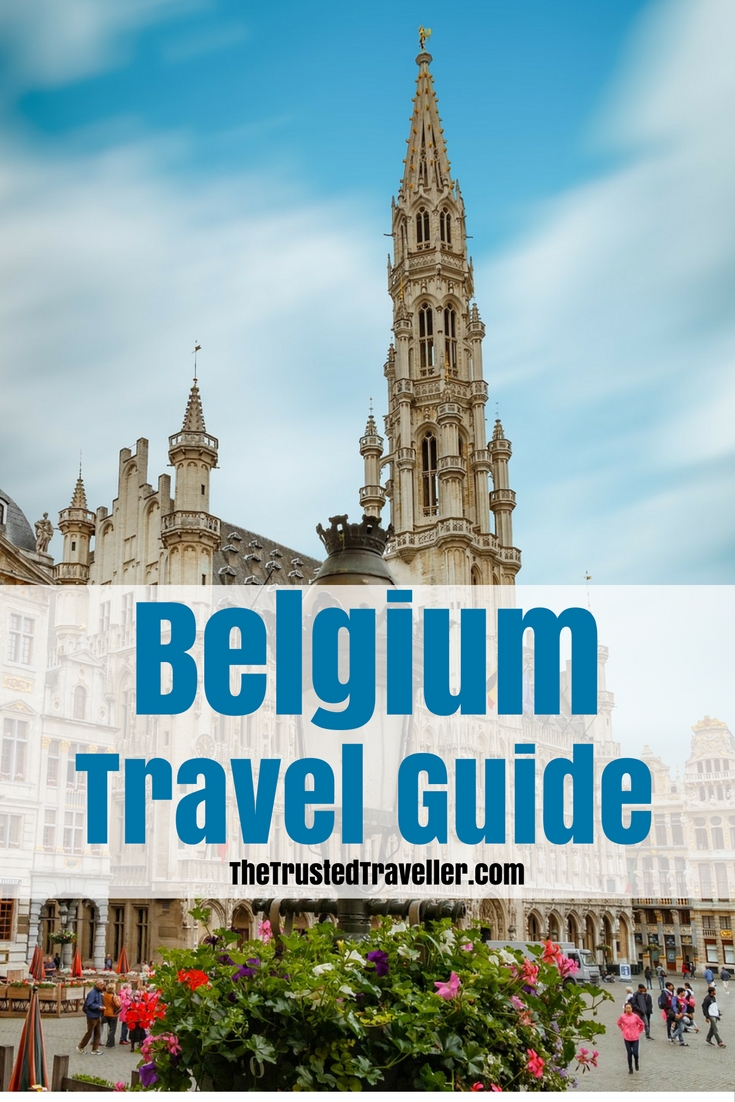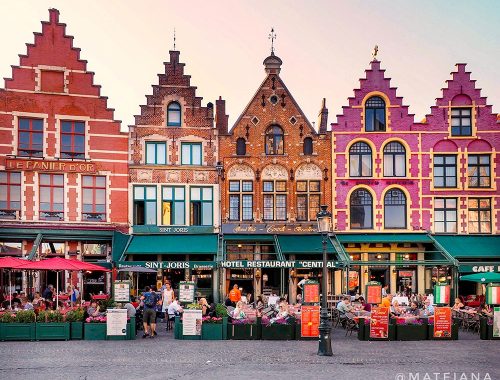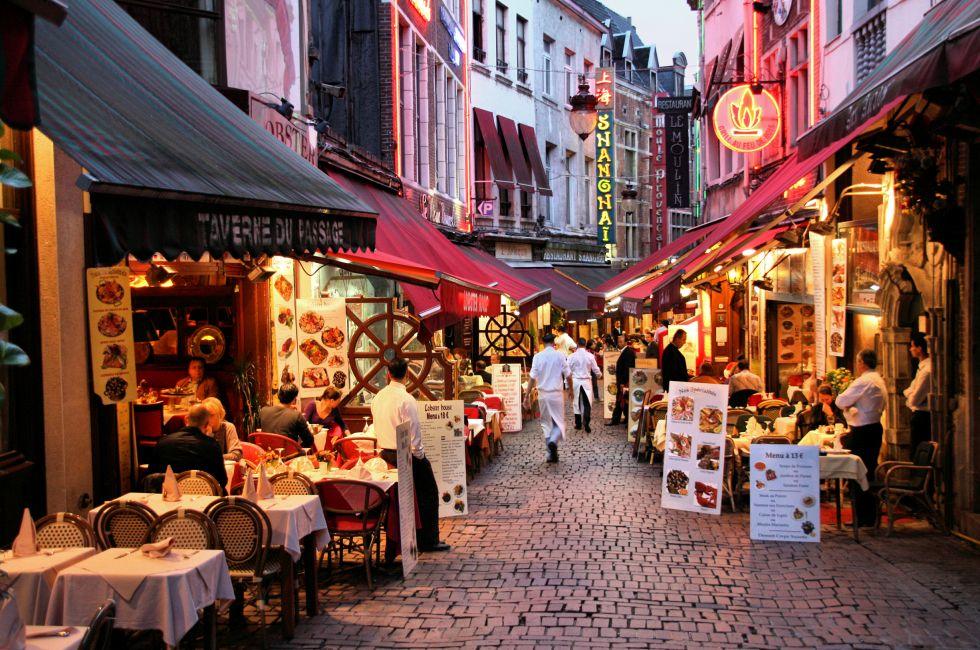Belgium Travel Guide - Let's Visit The Land Of Chocolate
The first-ever Belgium Travel Guide was published in 1832. It was written by Antoine-Jean Letellier de Saint-Just, who had been a member of the French revolutionary army.
Author:Liam JonesReviewer:Sophia HarperApr 04, 202242K Shares1.4M Views

The first-ever Belgium TravelGuidewas published in 1832. It was written by Antoine-Jean Letellier de Saint-Just, who had been a member of the French revolutionary army.
Belgium is a small country with a rich history and culture. It is also home to some of the most beautiful cities in Europe, such as Brussels, Bruges, and Ghent.
Belgium is not only a beautiful country full of history and culture but it also offers lots of opportunities for travelers. There are many things to do in Belgium, from visiting the world-famous museums to enjoying live music at one of the many festivals held throughout the year, all these things are mentioned in this Belgium travel guide.
Why Should You Go To Belgium?
There's more to this quirky European monarchy than Napoleon's Waterloo, infamous Eurocrats fattening up in Brussels, and delicious chocolates. Whether baroque power temples or modest Flemish canal-side homes, the architecture is stunningly preserved. The canal-dotted terrain is flat in the north and delightfully hilly in the south, and the Belgians are cordial to guests if not to each other.
The northern Flemish and the French-speaking Walloons in the south are fierce rivals. Belgian fine art, muscular beer, and delicious French/German food turn fit guys into Walloon balloons overnight. Then there are the deadly beers like Mort Subite and Delirium Tremens... Belgium is efficient, safe, and easy to navigate and vacation days in Belgiumare just a dream come true, while Amsterdam, Luxembourg, and Paris are nearby.
The small size of Belgium gives it an unjustified reputation for being uninteresting. Few great attractions include many tourists in a small area. It's also pricy.
Belgium's Weather
May-September. Belgium doesn't get really hot or very cold, but it's usually dreary and damp.
The worst time to visit is between Nov-Mar. Evenings are short, but Christmas markets are bright and festive. Minimum worthwhile stay: Brussels for a wild weekend. 9 days to see this tiny country.
Attractions
Brusselsis a lively, diversified city. Antwerpis a bustling, picturesque historic port with a rich history, efficient trams, modern museums, and an astounding range of architectural styles from medieval to art nouveau. It also has a vibrant European fashion scene, as well as numerous bars, clubs, and trendy social hangouts.
Bruggeis a lovely medieval city with its canals, 13th-century structures, and great art collections is a must-see, despite the inevitable tourist throngs.
Ghent is a medieval city with canals, beautiful buildings, and vibrant student life. The Ardennesare a quiet southern region with rivers, forests, valleys, and rustic towns in southern Belgium. Most visitors arrive at Namur, a charming and vibrant town. Some cross the border into Luxembourg from the Ardennes.
In addition to being a large seaport, Ostend has nice beaches, watersports, and some historic buildings. Intercity bus and train services are efficient and affordable. Antwerp 40 min, Bruges 1 hour, Ghent 40 min, Namur 50 min, Ostend 1.20 min, Luxembourg City 2.5 hours.
Hiking
Several well-marked, pleasant paths span the flat north or hilly south and east of Belgium. A fantastic place for hiking and bicycling is the Forest de Soignes.
Biking
Short distances across a relatively flat territory in Flanders or more scenic pathways in the steep Ardennes through dedicated bike lanes. Major routes might be dangerous, but car drivers generally respect bikers. Trains may carry bikes or rent them at stations.
Festivals
- Friday, May 5, Bruges. Since 1303, hundreds of locals dressed in beautiful medieval attire have carried the Holy Blood relic about town.
- May 22, Lumecon Battle & Golden Chariot Procession, Mons.
- A George and the Dragon duel and a religious procession.
- May-November, Flemish Festival Stunning classical music in majestic cathedrals in Flanders.
- The Ommegang Pageant, Brussels, June 30th. Since 1549, a vibrant 'folkloric' procession and games.
- July 21 Bruges Antiques Fair, Autumn. Vintage in beautiful settings.
Visas
EU people can freely travel borders, whereas US, Canadian, Australian, New Zealand, and Japanese nationals do not. Locals are unlikely to reach into your pockets in Belgium, but transient new Europeans are not as cautious. Officially, Belgium speaks Flemish, French, and German, however, due to the high number of ex-pats in Brussels, most Belgians also know English. If you want to visit South Belgium, brush up on your French. Hotels are pricey and often booked up months in advance. Brussels and Antwerp have metros. Taxis are costly. Bicycles are popular in the flat terrain and may be rented at numerous rail stops.
Canal boat rental is an oddity. Bruges, Belgium Bruges, is famous for its canals and bell tower, Gourmet food and drink are easily accessible in Belgium, though cafés serve good meals at far lower prices than restaurants. The cuisine is a mix of French, German, and local specialties. The national food of Belgium is moules-frites, mussels and chips, while waffles are a close second. Since service expenses are covered, gratuity is not required, but it is common.
Is Belgium Expensive To Visit?
Belgium is not an inexpensive place to visit. Accommodation is pricey and meals and drinks may really add up.
Conclusion
Belgium is a place that has been visited by many people over the years. It is also one of the most affordable countries in Europe, with a cost of living on par with countries like France and Germany.
Belgium travel guide offers an overview of Belgium's history, culture, cuisine, and attractions.

Liam Jones
Author
Liam Jones has made it his mission to prove that adventure doesn’t need a hefty budget. Having traveled to over 40 countries, he specializes in finding affordable ways to experience the world, from the best street food in Bangkok to hidden gems in Lisbon.
Liam’s travel tips have reached thousands of readers, empowering them to see the world on a shoestring budget without sacrificing quality. With a deep passion for local cultures, he continues to share his travel hacks, ensuring adventure remains accessible to all.

Sophia Harper
Reviewer
Sophia Harper’s photography acts as a portal to the soul of the places she visits. Drawn to South America’s landscapes and cultures, she has spent years capturing everything from the majesty of ancient ruins to the vibrancy of urban streets.
Sophia’s work isn’t just about documenting moments; it’s about evoking the emotions and stories behind them. A dedicated photographer, she has worked with local communities across South America to capture their rich cultural narratives through her lens.
Latest Articles
Popular Articles

